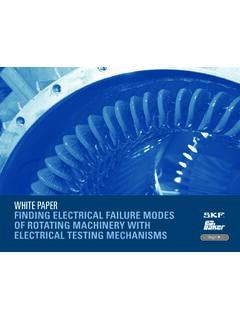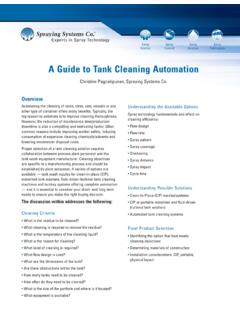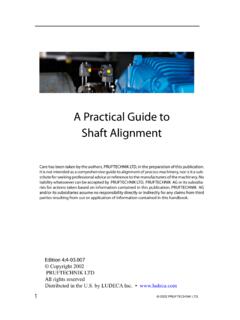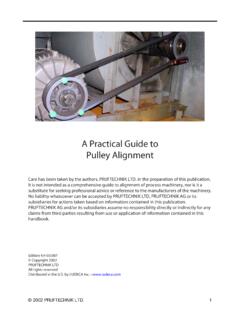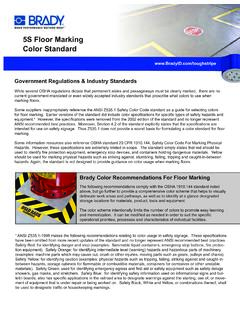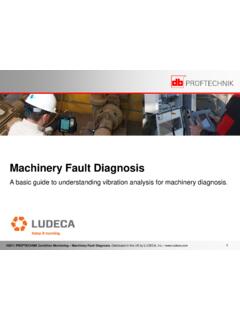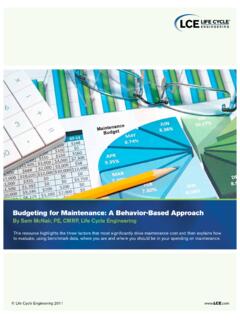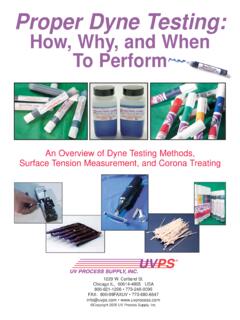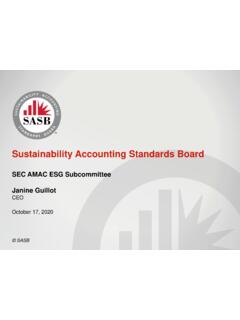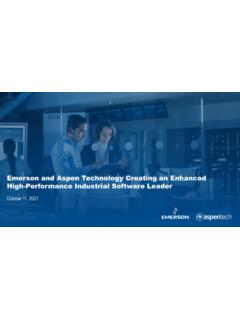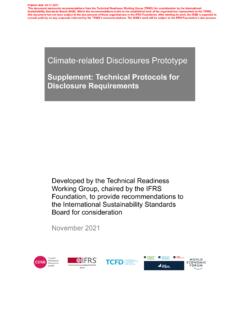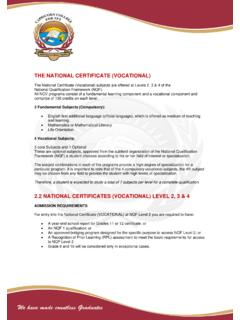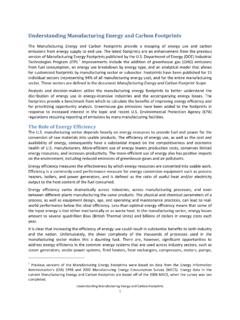Transcription of Maintenance, Repair, and Operations (MRO) in Asset ...
1 Maintenance, Repair, and Operations (MRO) in Asset Intensive Industries February 2013 Nuris Ismail, Reid Paquin This document is the result of primary research performed by Aberdeen Group. Aberdeen Group's methodologies provide for objective fact-based research and represent the best analysis available at the time of publication. Unless otherwise noted, the entire contents of this publication are copyrighted by Aberdeen Group, Inc. and may not be reproduced, distributed, archived, or transmitted in any form or by any means without prior written consent by Aberdeen Group, Inc.
2 February 2013 Maintenance, Repair, and Operations (MRO) in Asset Intensive Industries The impact Maintenance, Repair, and Operations can have on corporate performance is regularly misinterpreted and undervalued by manufacturing organizations. Too many companies inaccurately think MRO consists solely of waiting for an Asset to go down, and then fixing or replacing it. By taking this approach, companies will miss out on improving production capacity while reducing their inventory investment. Aberdeen's December 2011 Enterprise Asset Management in 2012: A Data Driven Predictive Approach to Maintenance revealed how 119 Asset intensive manufacturers use Asset management strategies to improve profitability and stay competitive in the marketplace.
3 In this Analyst Insight, we will delve into how a well-executed MRO program can improve Asset management and inventory optimization. This report will serve as a guide for maintenance and reliability professionals looking to improve the availability, reliability, and safety of their assets, people, and products. Business Context Given the current economic climate, volatile energy prices, and unstable customer demand, executives in the Asset -intensive industries must make rapid and difficult business and operational decisions.
4 To remain competitive, manufacturers are looking for new ways to get the most out of their assets, assure their assets stay online, and plan for unexpected failures. As shown in Figure 1, manufacturing executives are laser focused on maximizing the return of their current Asset base. Overall, the ultimate goal of any successful MRO program is to extend the lifecycle and efficiency of the Asset base. By keeping assets at peak performance levels, the enterprise is able to maintain a higher level of quality, resulting in less scrap and higher yields.
5 Another area of focus of MRO is cost reduction. Such costs include freight, loading, unloading, warehousing, service / maintenance fees, and inventory management costs. In addition, MRO also focuses on the continuity of supply and vendor support through contracts directly with the manufacturer or through a local distributor. This means evaluating and accurately assessing which parts are stocked in house or by the supplier based on the criticality of the parts respective to the Asset . Accurately assessing the criticality of parts to their respective assets and adjusting stock levels accordingly frees up capital.
6 Analyst Insight Aberdeen s Insights provide the analyst's perspective on the research as drawn from an aggregated view of research surveys, interviews, and data analysis Sector Definition Asset intensive industries include, but are not limited to: oil and gas, mining, metals and metal processing, energy and utilities, chemicals, pharmaceuticals, and pulp and paper . Maintenance, Repair, and Operations (MRO) in Asset Intensive Industries Page 2 2013 Aberdeen Group. Telephone: 617 854 5200 Fax: 617 723 7897 Figure 1: Pressures Driving Focus on Operations Source: Aberdeen Group, September 2012 The pressure of compliance and risk is a big area of concern for Asset intensive industries.
7 industry specific regulations, such as NERC and FERC for Utilities in North America, drive companies to focus attention towards managing the reliability of assets. The risk of non-compliance will not only result in fines, but environmental incidents such as the Deep Water Horizon. These incidents have resulted in both loss of life and brand damage, which is nearly impossible to repair. Having an efficient MRO strategy is an effective way to ensure that all equipment and processes are in compliance with regulations.
8 At the same time, MRO is particularly important in industries with complex products or long lifecycles, since any form of unscheduled downtime can translate in to missed product deadlines and affect the company's bottom line. Therefore, as part of the MRO strategy, it is important to also have a comprehensive view of the supply chain . If there is a supply chain disruption, it would delay the delivery of the critical part needed to fix the Asset and potentially result in the Asset being offline for hours (at best), if not days.
9 Maturity Class Framework Aberdeen used four key performance criteria to distinguish the Best-in -Class from industry Average and Laggard organizations. These metrics measure the success of an organization's MRO program not only in terms of how it has improved plant Operations , but also how successful these programs have been for achieving financial goals. Respondents were divided into three categories based on their aggregate performance in the top five metrics: the top 20% of performers (Best-in -Class), the middle 50% ( industry Average), and the bottom 30% of performers (Laggards).
10 Table 1 displays the aggregated performance of Best-in -Class, industry Average, and Laggard organizations. 26%45%48%50%0%20%40%60%Rising material costNeed to better manage or reducethe risk profile of operationsNeed to maximize Return on Assets(RoA)Need to be in compliance withcurrent and future regulationsPercentage of Respondents, n=119 All Respondents"Risk management are often perceived to be a department's function when the overall company needs to embrace this as a single effort to reduce risk and increase the company's overall viability.
